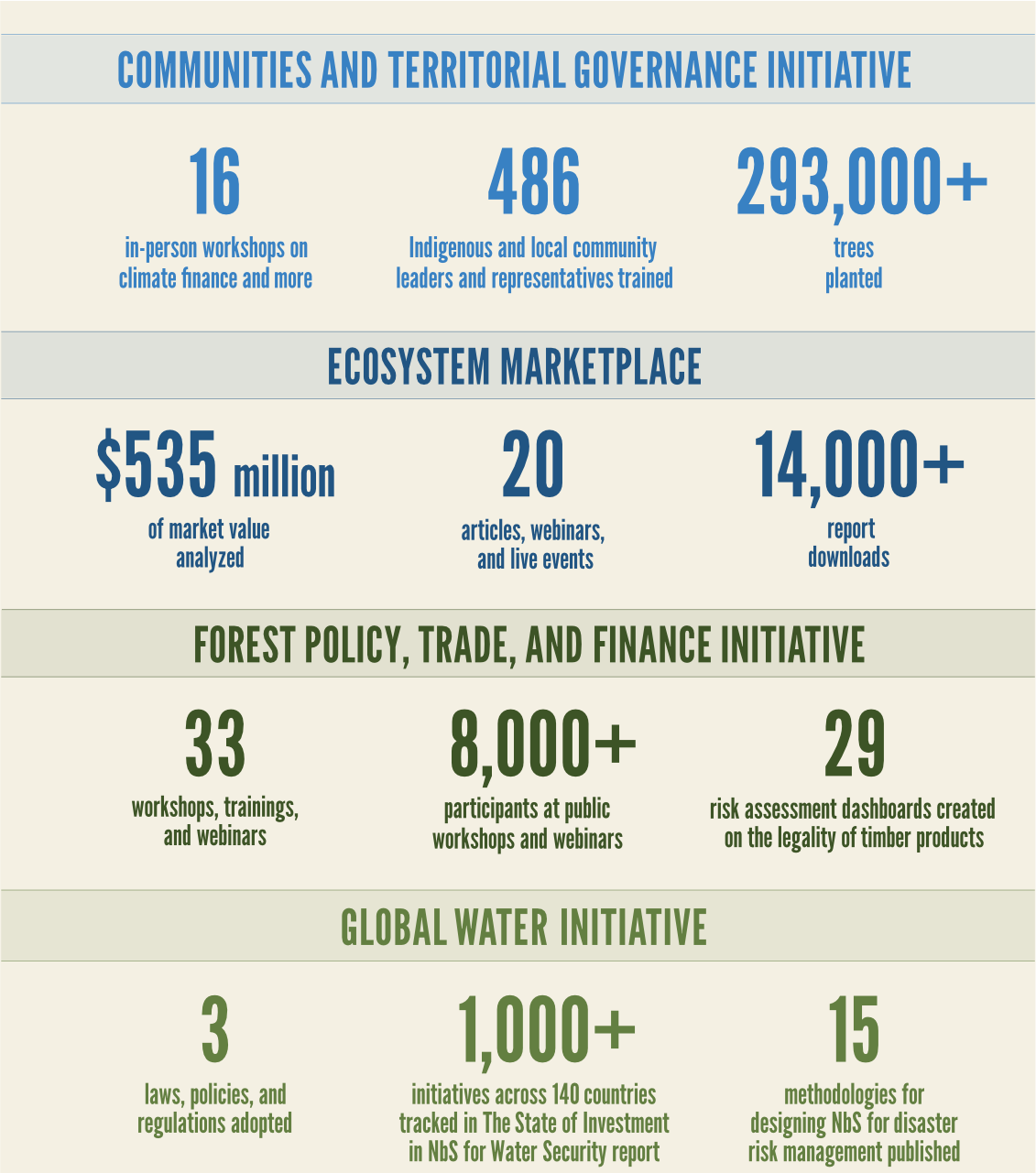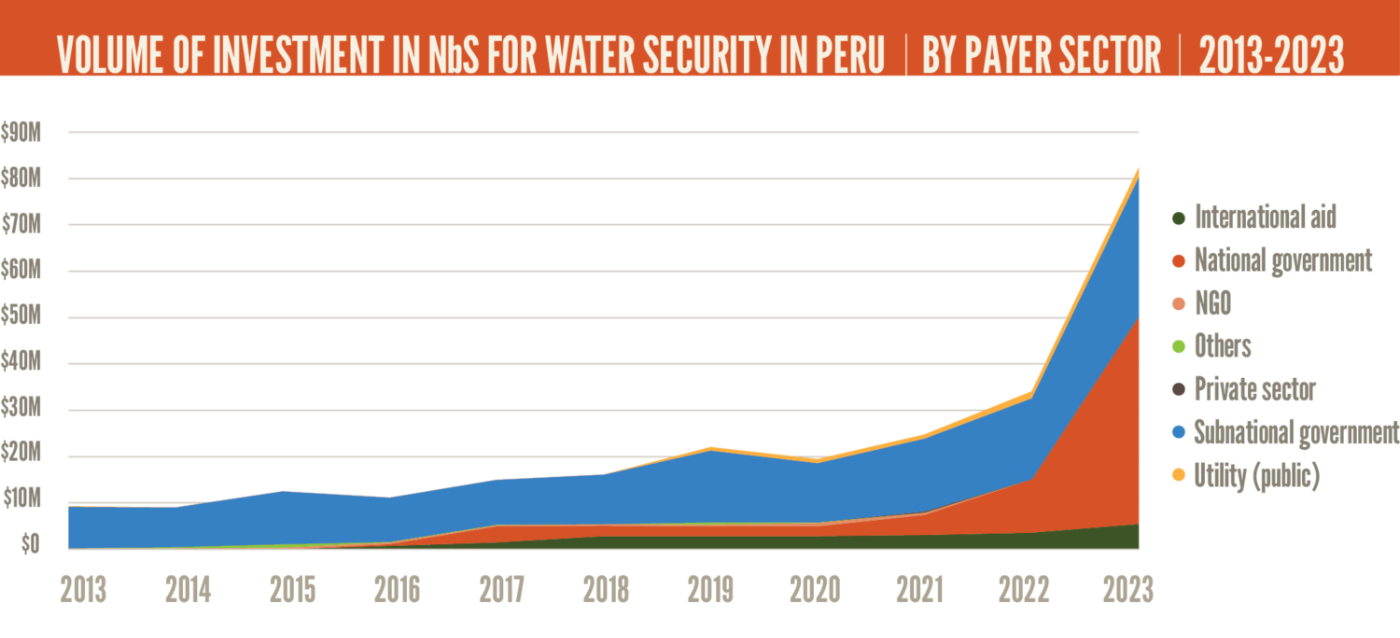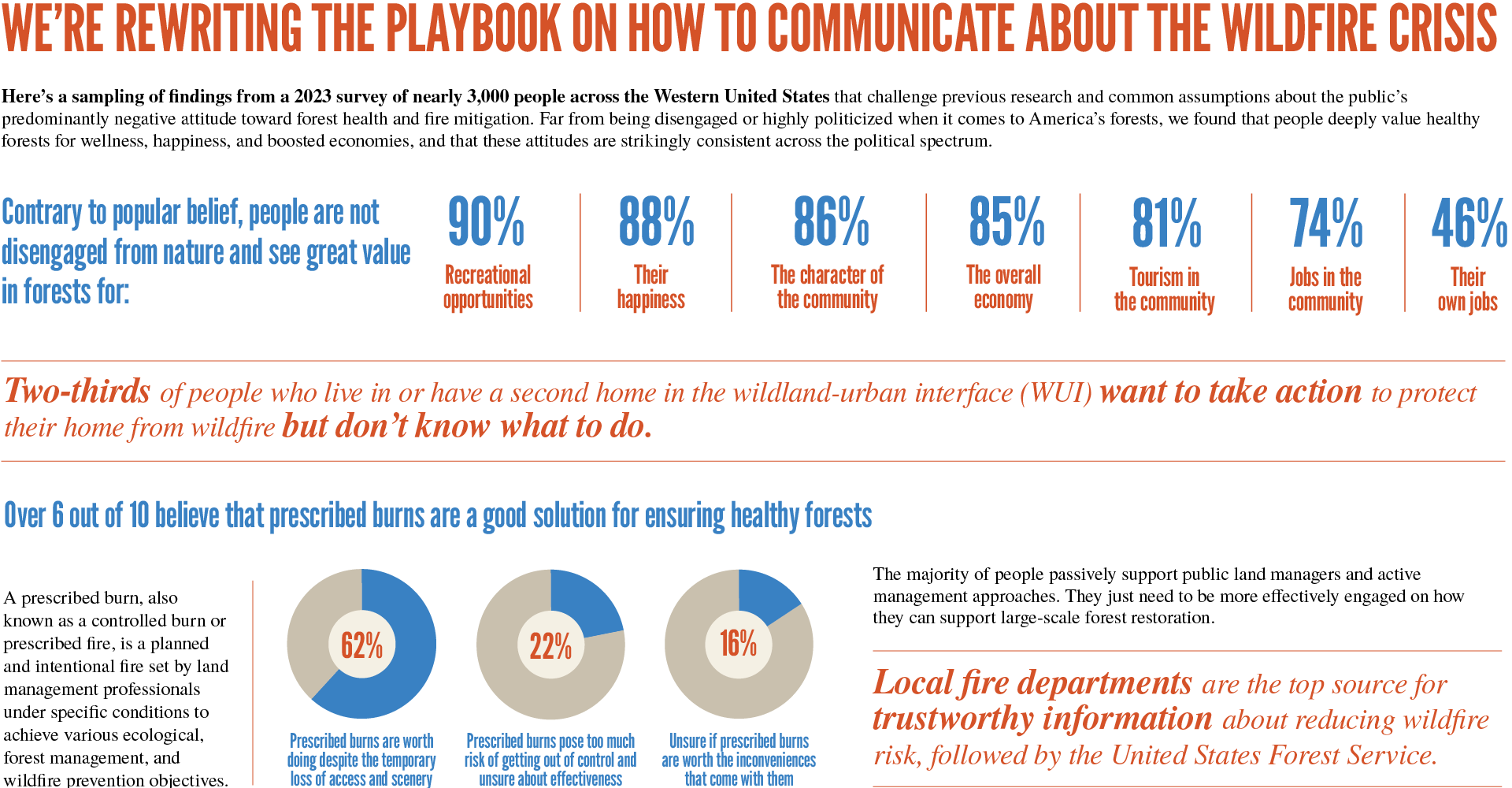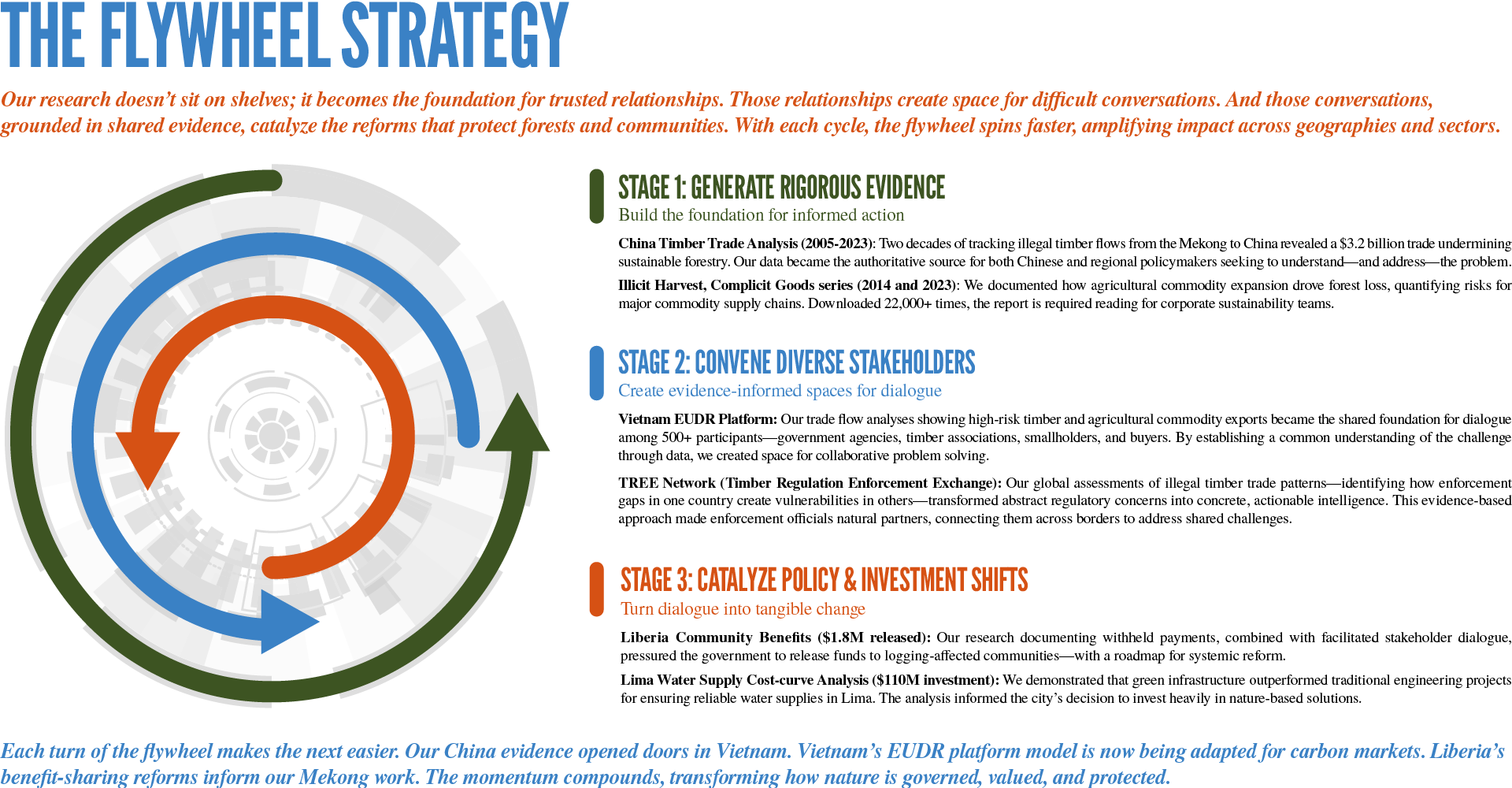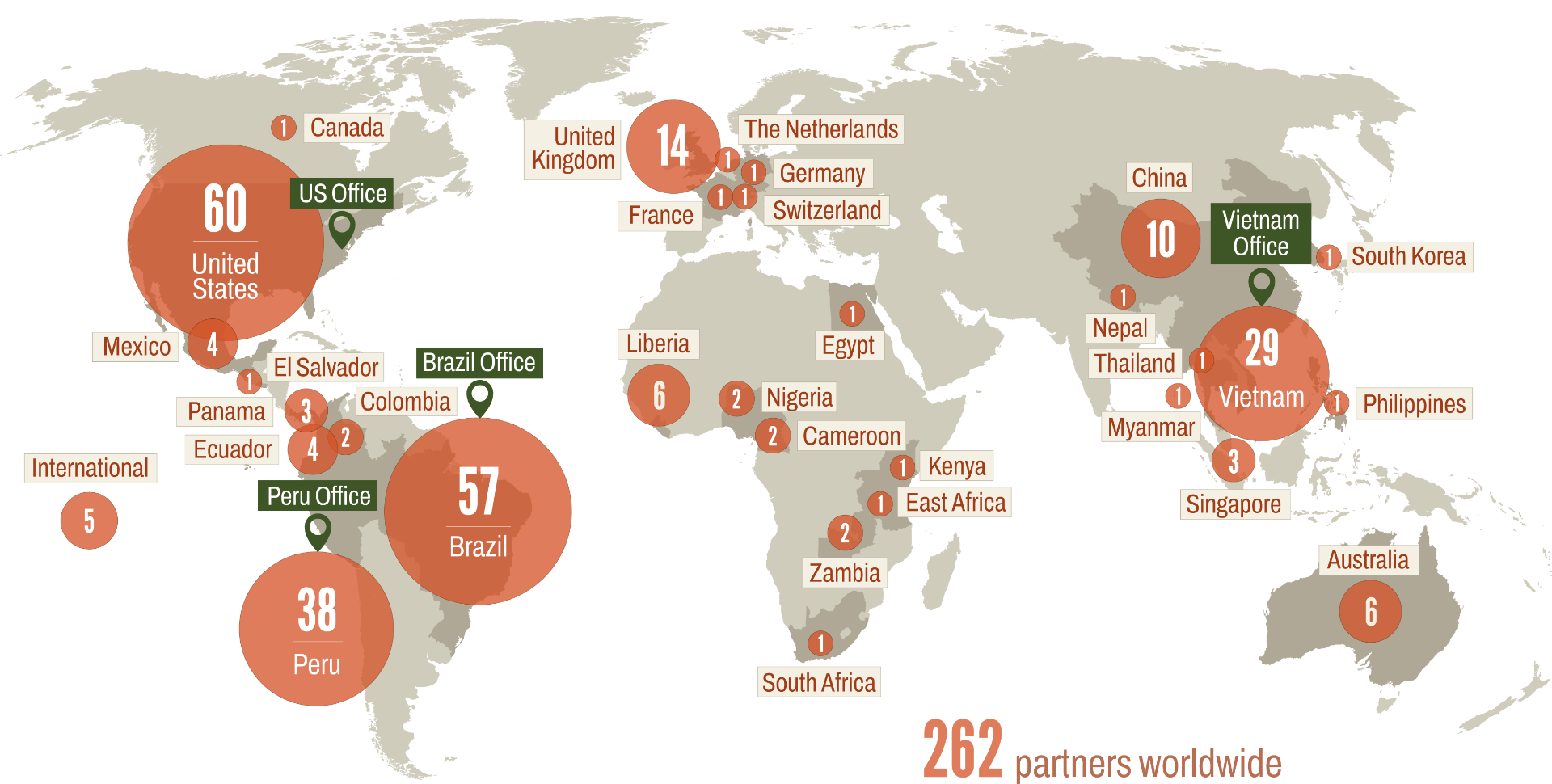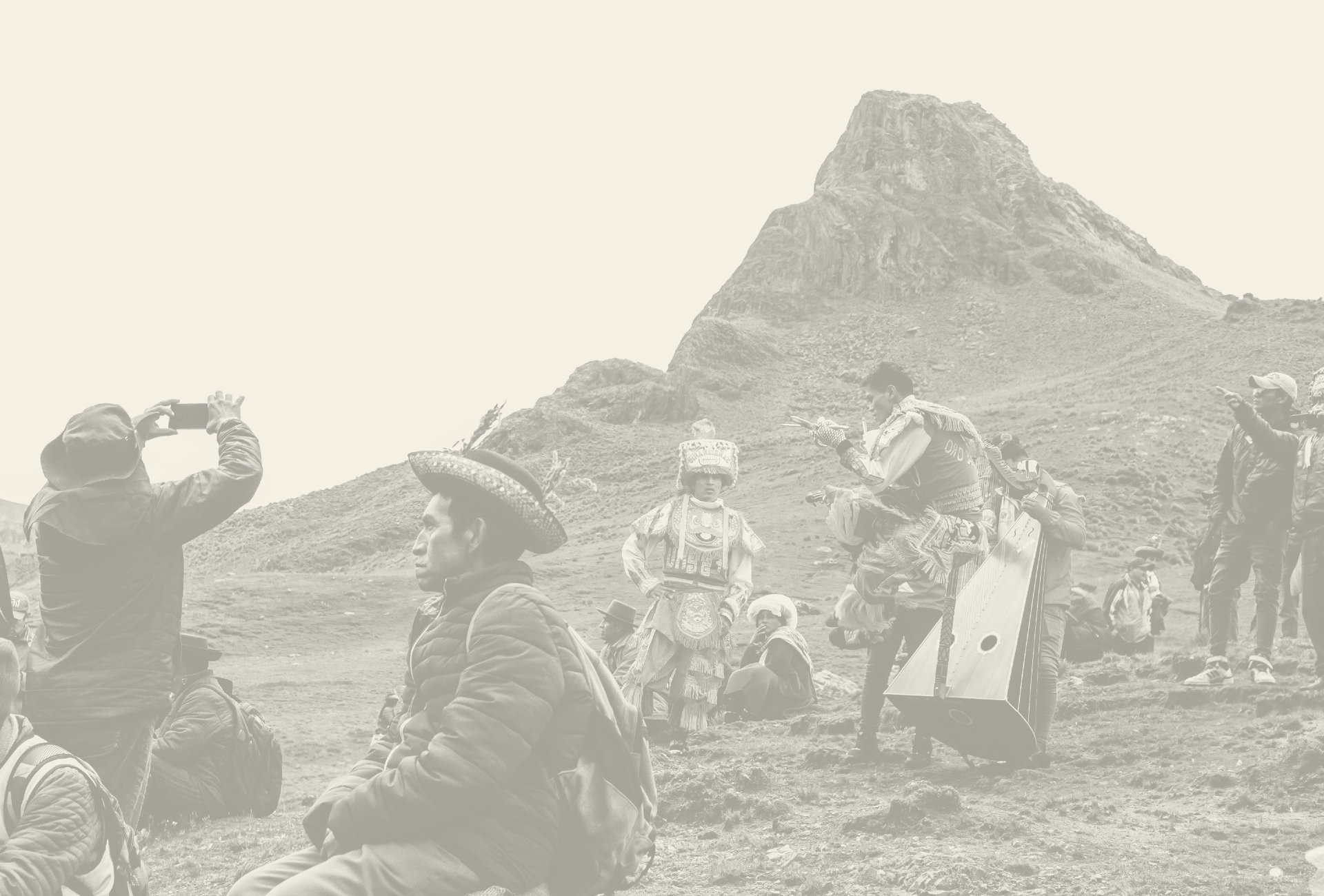



Field Guide | 2025 to the Future
Reflections on 25 Years of Pioneering Finance for Nature
FROM VISION TO ACTION
A message from Michael Jenkins, Founding President and CEO, on 25 years of growth and partnership
Twenty-five years ago, Forest Trends was founded on a bold idea: that markets could be powerful allies in protecting the planet if guided by the right values. In 1999, putting a value and price on nature’s services was considered radical. Today, it is essential. Around the world, governments, investors, and communities are embracing the idea that economic growth and environmental health are shared goals.
Looking back over the past 25 years, I am proud of how far we have come. Together with our partners, we have turned theory into practice and practice into impact. From pioneering payments for ecosystem services to supporting Indigenous and local communities as architects of new nature-based economies, our work has always been about demonstrating what is possible when markets and nature are aligned.
This milestone year is not just a chance to celebrate the past, but to take stock of the road ahead. The urgency of the climate crisis has never been clearer. Record heat, droughts, and floods are transforming landscapes and livelihoods. Yet even in the face of such challenges, we see extraordinary examples of innovation and resolve.
As we reflect on our history, we also celebrate the power of collaboration. Twenty years ago, we helped co-found the Rights and Resources Initiative, which has become a global leader in advancing Indigenous and community land rights. The Katoomba Group, which we launched in 1999 and marked its own 25th anniversary with a gathering in Australia last year, continues to bring together the thinkers and doers shaping markets for nature. In Brazil, our historic partnership with the Ministry of Indigenous Peoples is supporting territorial governance and climate finance through a series of workshops with Indigenous leaders across all of Brazil’s different biomes.
Markets and finance for nature are no longer niche, and our flagship State of the Market reports have benchmarked that maturation over the last two decades—and, we think, been a central source of transparency and credibility helping to drive growth. Our recent Doubling Down on Nature report found that investment in nature-based solutions for water security has doubled over the past decade, exceeding 49 billion dollars in annual spending globally. Our State of the Voluntary Carbon Market 2025 report shows a market in transition to a greater focus on quality and integrity. Together, these efforts point toward a future where data, rights, and partnership shape how markets work for people and the planet.
In Peru, nature-based solutions for water security have moved from the margins to the mainstream of national policy thanks to our Natural Infrastructure for Water Security project. Communities, utilities, and ministries now work together to protect watersheds and manage climate risks. In the Amazon, Indigenous-led forest projects continue to demonstrate that local stewardship is the most effective path to conserving forests and biodiversity. And in the Western United States and beyond, traditional Indigenous fire management practices are being rediscovered and integrated into wildfire mitigation strategies, showing the power of blending ancestral knowledge with modern science.
This year, the COP30 climate negotiations in Belém underscored the global significance of Indigenous leadership. The Indigenous Village COP (the first of its kind in three decades of climate talks) brought together thousands of Indigenous leaders from Brazil and across the world to guide negotiations, share knowledge, and showcase solutions for forests, climate, and communities. Forest Trends is proud to have supported this initiative, helping ensure that Indigenous voices were at the center of the global climate conversation. The Village exemplifies the principle that climate and conservation finance, policy, and action are most effective when they are designed with communities, not for them.
Our 2025 Impact Report reflects this dual perspective of past and future. It celebrates 25 years of collaboration, learning, and measurable results, while also highlighting the challenges and opportunities that lie ahead. It reminds us of how far we’ve come, and how transformation is both local and global. The choices we make now—in how we invest, govern, and grow—will define the next quarter century.
To everyone who has been part of this journey, thank you. Your commitment and creativity have made Forest Trends what it is today. Our approach has always been one of building bridges and finding common cause across sectors and ideologies. We believe that lasting impact depends on unusual partnerships that unite communities, policymakers, scientists, and businesses around a shared purpose. As we look to the future, we remain guided by a simple truth: when we respect nature’s true value, everyone benefits.
Wishing you all well this New Year,

Michael Jenkins
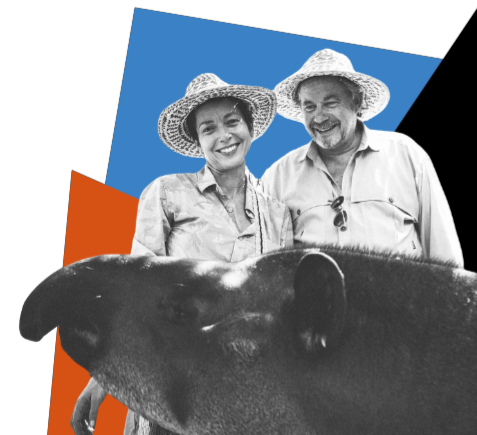
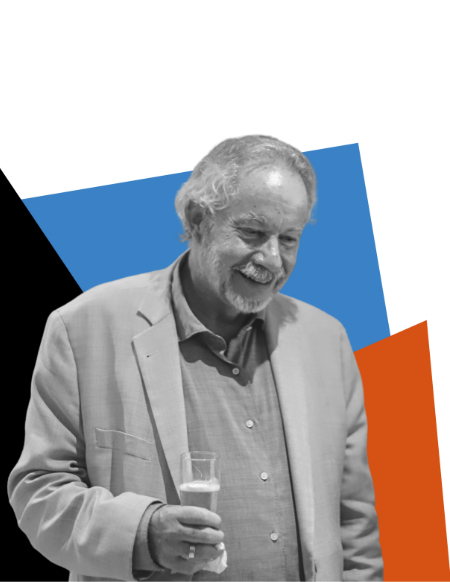
OUR MISSION
Forest Trends’ mission is to drive innovation in environmental finance to sustain resilient ecosystems and communities.
Since 1999, we have created finance and business models that reshape capital markets, value chains, and rural economies. We blend emerging technology and new markets with the knowledge of Indigenous Peoples and Local Communities to embrace the power of nature and not deplete it.
We do everything through partnership, creating unique opportunities for collaboration, innovation, and coalition building across diverse sectors, interest groups, and geographies. This creates the ideal conditions needed to bring about investments in nature with high economic and social returns. And we set communities up for success by ensuring they are central to designing and overseeing these investments.
Our vision is that by 2030, global economic and policy forces will be aligned with the essential requirements for resilient ecosystems and communities:
- Conserving and expanding healthy ecosystems
- Restoring imperiled ecosystems
- Sustainable production
- Upholding the rights and livelihoods of Indigenous Peoples and other local stewards of nature
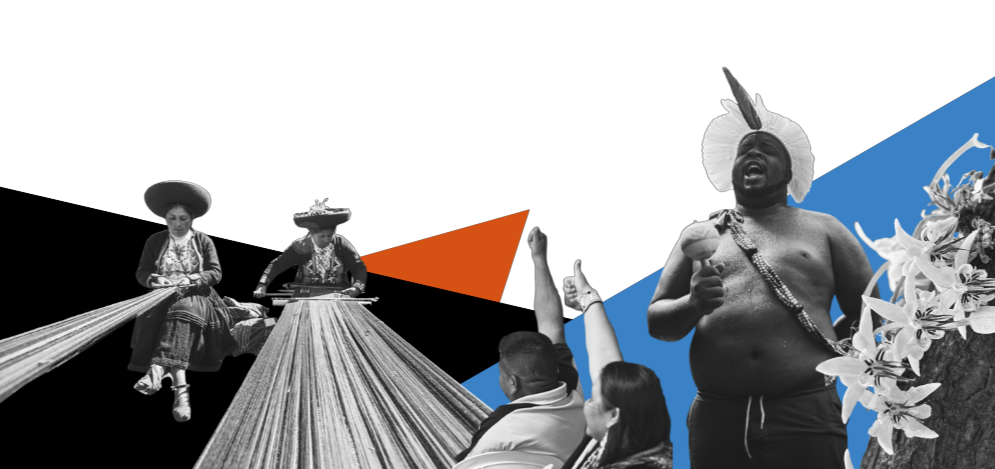
HOW WE’RE FUNDED
Gifts from donors allow us to increase the impact of our programs and support our local partners.
In this way, we continue to:
- Nurture the next big idea
- Invest in the champions and coalitions driving change
- Apply expert analysis and field-informed leadership
GIVE TODAY
Your contribution makes this all possible. Each gift supports communities, protects forests, and amplifies voices for a more sustainable future. Join us in growing ideas that change the world.
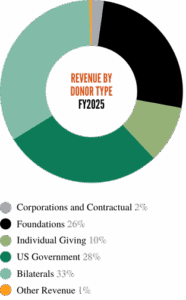

25 years of Influence
What We Did in 2025
Stronger together
The role of coalition building in Peru’s journey to water security
Across the globe, water crises are intensifying—from prolonged droughts in Somalia to devastating floods in Texas. Nature-based solutions offer a proven way to respond, helping to smooth out a water cycle that climate change is stretching into ever more extreme peaks and valleys. In Peru, where climate extremes threaten both urban centers and rural livelihoods, a quiet transformation is underway, as nature-based solutions move from the margins to the mainstream of the country’s water risk management.
Over the past 15 years, Forest Trends has helped catalyze a coalition of government agencies, local communities, NGOs, private companies, and researchers, united by a shared vision to reimagine how Peru manages water. Together, we built not just technical and policy frameworks, but the financing mechanisms, science and data, project pipelines, and trust that make systems change possible. The result is a lasting shift in how institutions work day-to-day to protect water at its source.
The results speak for themselves. Between 2016 and 2023, investment in nature for water security in Peru grew more than sevenfold, reaching $80 million in 2023 alone (Figure 1)—the highest of any Latin American country. More importantly, institutions responsible for drinking water, disaster risk management, and rural development now look upstream for solutions, treating forests and wetlands as core water infrastructure.
Tapping into our broad network and decades working throughout Peru, Forest Trends helped bring unlikely partners to the table. For example, municipal water utilities—often focused on concrete and pipes—emerged as early adopters of nature through partnerships brokered by our Global Water Initiative.
With support from technical experts, civil society, and community leaders, utilities began channeling a portion of user tariffs to upstream watershed restoration. In less than a decade, utility investment in natural infrastructure grew from $25,000 in 2013 to over $1.4 million in 2022. Today, 49 of 50 utilities in Peru are investing in nature—a dramatic systems-level shift.
Momentum from utilities helped drive another shift: integrating natural infrastructure into Peru’s public investment system—the mechanism that determines how billions of dollars are spent each year on infrastructure and development. We worked with national ministries tosecure policy reforms that recognized natural infrastructure as a public investment category, enabling national agencies and subnational governments to plan, budget, and execute projects to restore wetlands and forests with the same rigor and approval pathways as roads, reservoirs, and treatment plants.
Through our Natural Infrastructure for Water Security project (NIWS) starting in 2017, we developed practical tools and strengthened capacities that made it possible to prepare natural infrastructure projects that met public investment standards. Together with partners, we built a portfolio of over $350 million in new natural infrastructure investments to improve water supplies and reduce risks of floods and landslides.
In 2025, the NIWS project was unfortunately and abruptly cut as part of the broader closure of USAID. Despite this unexpected loss, the momentum continues. The systems we helped build are still operating, and many of our partners are now leading initiatives that were once considered experimental. We’re actively working to secure new funding so we can continue supporting Peru’s progress—and expect to have good news to share very soon.
Even in these hyper-polarized times, Peru shows what’s possible when we build coalitions around systemic solutions. Public utilities, local communities, NGOs, and many others came together not just to talk, but to transform how a nation values nature’s role in its water security—and shift how institutions plan, finance, and act to protect it.
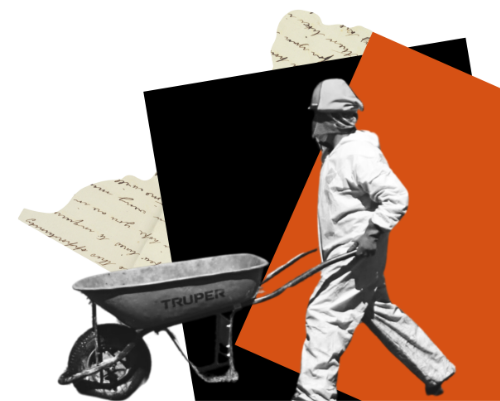

“Forest Trends is helping us reframe how we talk about proactive forest management. By understanding key motivations, we will be able to unite people through shared values and a common love of our forests.”


Beyond Smokey Bear
Reviving old wisdom to face a new wildfire reality
Wildfires in the Western United States—and around the world—are growing larger and more destructive due to rising temperatures and drier conditions. In many regions, fire seasons are lengthening, and extreme weather is fueling more frequent, intense, and widespread wildfires. These fires pose serious threats not only to human and animal life, health, and welfare, but also to local economies and the private sector. Based on 2025 data from the World Resources Institute, wildfires are now the largest driver of forest loss globally, as well as an increasingly significant source of carbon emissions, with NASA research revealing a 60% increase between 2001 and 2023.
In response to these growing risks, it’s become clear that more active management of forests is needed, including the use of thinning and prescribed fires to remove decades of built-up fuels, such as overgrown brush and dead trees. This kind of strategic, controlled use of fire to prevent catastrophic wildfire events has been practiced for millennia by Indigenous and traditional communities. The global wildfire crisis has stimulated new interest among governments and land managers in learning from these cultural burning practices.
While Forest Trends research clearly shows that most local residents support forest thinning and prescribed burns as tools to boost forest health and mitigate wildfire risk, these practices have sometimes faced strong opposition from small but vocal groups. You might say that Smokey Bear’s emphasis on never, ever letting forests burn has been a little too effective.
To address this gap in engagement and education, the USDA Forest Service has partnered with Forest Trends’ communications team to deliver a strategic communications campaign designed to build support for critical forest health treatments that enhance the health and resilience of national forests.
Our multi-year partnership is focused on crafting an overarching communication strategy and locally customizable toolkit grounded in solid evidence and input from forest health experts, local stakeholders, communities, and frontline workers. We think communicating solely about wildfire solutions in the language of risk, fear, and technical jargon isn’t enough to motivate behavior change. In fact, it’s often paralyzing and counterproductive. We’re instead utilizing an innovative values-based approach proven to help shift the conversation. We’ll be far more effective if we can tap into deeply held values and emotional connections to local forests, offering a vision of a future where healthy forests support new economic opportunities and jobs, public health, recreation, and an overall amazing quality of life locally.
We also think there are a lot of actors who would like to be part of the solution to the wildfire crisis in the places where they live and do business, but they’re not being effectively engaged. A core goal of our work is to build diverse coalitions of public and private sector stakeholders who can drive impact on a far more meaningful scale.
Over the next two years, we’ll focus on accelerating action on Colorado’s Front Range in particular. We know our approach will have broader national relevance. What proves effective here can be adapted to other landscapes grappling with the national wildfire crisis in later phases of this initiative.


Data vs. Goliath
A conversation between Kerstin Canby and Silas Siakor
Sometimes the right weapon in the fight against injustice and corruption is just a spreadsheet full of timber exports. Here’s a conversation (edited for length) between Kerstin Canby, Senior Director of our Forest Policy Trade and Finance (FPTF) Program, and Silas Siakor, Executive Director of Integrated Development and Learning and recipient of the 2006 Goldman Environmental Prize. Find the abridged transcript here.
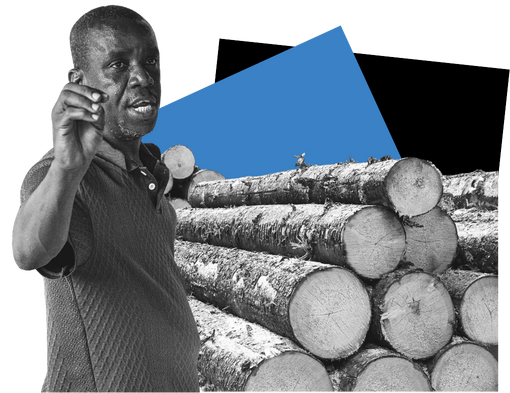
naturetech and the
new era of conservation
From the forest floor to global markets, a technological revolution is reshaping how we measure, value, and protect nature
Working in some of the world’s most remote forests or tracing products through sprawling global supply chains has always been complex. Conservation teams today must process vast streams of data, engage with communities who may be mobile first or speak Indigenous languages, and measure ecosystem health across immense and changing landscapes. Monitoring, Reporting, and Verification (MRV) technologies have existed for decades, but what is new is the speed, scale, and affordability of innovation. Today, NatureTech is changing what is possible, revolutionizing how we gather evidence, validate Indigenous stewardship, and strengthen accountability from the forest floor to global markets.
For decades, conservation has relied on painstaking fieldwork and fragmented data systems. Today, we’re at an exciting inflection point. NatureTech—the convergence of AI, remote sensing, and digital platforms—is fundamentally changing what’s possible in conservation. What once took months can now happen in days. What was once prohibitively expensive is becoming accessible. What seemed immeasurable can now be quantified and verified.
Whether we’re validating Indigenous stewardship in the world’s most remote forests in real time or tracing deforestation-free commodities through complex supply chains, these technologies are not just improving how we work. They have the potential to unlock entirely new approaches to protecting nature and benefitting the communities who steward it.
OPPORTUNITY
Connecting Traditional Knowledge and NatureTech
New monitoring and remote sensing tools, such as camera traps (motion- and heat-sensitive devices that track wildlife), wireless sensor networks (low-cost tools for monitoring environmental factors, animal behavior, and illegal activity), and acoustic sensors (recorders that capture biodiversity and human disturbance through sound) are helping measure and validate Indigenous stewardship in real time. When paired with Traditional Ecological Knowledge, these tools become even more powerful, guiding where to place devices, how to interpret changes, and how to design culturally grounded sampling strategies that blend science with tradition.
In Brazil, the Yawanawá people, with support from Forest Trends and partners, are pioneering a new biodiversity stewardship methodology launched in 2024 that integrates science and technology into Indigenous-led monitoring. Using innovations such as environmental DNA, which detects traces of genetic material from indicator species in soil or water samples, they can identify changes in ecosystem health without intrusive fieldwork. Combined with geospatial data and valuation frameworks, this approach translates Indigenous stewardship into measurable and financeable ecosystem services. The result bridges worldviews, amplifying Indigenous knowledge through modern science and helping ensure that those who protect biodiversity are also its primary beneficiaries.
OPPORTUNITY
Tracing Commodities Across Global Supply Chains
NatureTech is also redefining how we enforce sustainability across global commodity chains. Digital due diligence systems, satellite imagery, artificial intelligence, and blockchain-based ledgers are now key to detecting deforestation risks and verifying product origins in near real time. These technologies underpin emerging regulations such as the EU Deforestation Regulation (EUDR), which will require companies to prove that products entering EU markets do not contribute to deforestation or forest degradation. By leveraging big data and AI, regulators and businesses can trace the journey of a timber shipment, or a soy or cocoa consignment, across borders with unprecedented precision. This helps close pathways for illegal trade, embedding accountability into the structure of global markets. In this sense, technology does not simply monitor, it enforces.
OPPORTUNITY
Democratizing Data Through AI
Critical market intelligence—from carbon credit prices to restoration financing opportunities—exists today, but it often sits behind paywalls or in formats that are inaccessible to the communities and entrepreneurs who need it most. Indigenous leaders, smallholder farmers, and local conservation groups in biodiversity hotspots are making decisions about restoration and stewardship, yet they frequently lack access to the very data that could help them secure funding or connect with markets.
This is where big data and AI-powered tools can be transformative, helping small organizations like Forest Trends punch above our weight and put decision-critical information directly into the hands of those on the ground. For example, agentic AI—systems that can autonomously collect, process, and synthesize information—can enable our small team to monitor and analyze far more data than would otherwise be possible, identifying emerging opportunities and risks across markets and geographies. Meanwhile, generative AI opens new pathways for accessibility: imagine a multilingual chatbot powered by large language models that allows a community leader in the Amazon or an entrepreneur in Central Africa to query our databases from their mobile phone, in their own language, and receive tailored guidance on financing mechanisms, market conditions, or regulatory requirements. These aren’t distant possibilities—they’re tools we’re actively exploring to ensure that the people protecting the world’s most critical forests have the same access to information as multinational corporations and policymakers.
As we look ahead, the promise of NatureTech extends far beyond monitoring forests or enforcing regulations. It is about generating credible, actionable evidence that drives smarter decisions, proving how conservation supports climate resilience, demonstrating that biodiversity stewardship is an essential service, and building investor confidence that ecological integrity can coexist with financial returns. For Forest Trends and our partners, the challenge is to design systems that amplify local voices, respect Indigenous governance, and ensure data translates into real benefits for nature and people. The next era of conservation will be defined not only by our ambition but by the strength, precision, and inclusivity of the evidence we can generate.


25 Years of
learning to listen
Co-creating solutions with the people who know the land best
When Forest Trends launched its Communities and Markets Initiative in the mid-2000s, we spent much of our effort organizing land security for Indigenous territories and local communities. We compiled technical information with strong scientific methodology. We systematized and produced high-quality content for publication. Our analysis showed that Indigenous Peoples and Local Communities had formal rights over 22% of forests in developing countries, doubling the figure from 15 years earlier.
But something fundamental shifted when we moved from publishing about communities to working within them. In 2009, the Paiter-Suruí people came to us with a demand: to assess the possibility, gains, and risks of using carbon credits to finance efforts to stop deforestation on their lands. This wasn’t us bringing a solution. This was a community with their own vision, seeking partners who would walk side by side with them.
The Suruí Carbon Project became the first REDD+ project in Indigenous Lands in the world and remains the only forest carbon project in the Brazilian Amazon whose proponent is the community itself. By working closer to the territories, we opened up the way to listen to specific demands and concerns from peoples’ own perspectives. We defined active and sensitive listening as our central pillar, building joint solutions based on mutual respect and open dialogue.
Over these two decades, our approach has continually evolved:
Information.
We value the integration of traditional, scientific, and technical knowledge. The flow of knowledge is a two-way street: we offer training and publications, but we continuously learn and transform ourselves through dialogue with communities. Knowledge becomes a tool for collective empowerment.
Incubate.
We operate as an incubator, supporting communities in transforming their ideas into concrete actions. Our decisions are based on catalyzing—the community always leads—with a focus on shoring up economic, cultural, and political autonomy for the long term.
Innovation.
We think outside the box with solutions that break down conventional barriers. We tackle ambitious projects with wide territorial scope and adapt successful models sensitively to local realities.
Diplomacy.
Based on active listening, we act as mediator and facilitator, with an ethical commitment to amplifying community perspectives. We move between local and global spheres, dialoguing with Indigenous Peoples, governments, businesses, and international organizations.
In 2018, we renamed ourselves the Communities and Territorial Governance Initiative, defining three pillars:
1. Political Governance:
The capacity and resources to defend rights and sovereignty.
2. Economic Governance:
Balancing market involvement with traditions, allowing communities to participate on their own terms.
3. Cultural Governance:
Spaces to reaffirm ethnic identities and focus on generational issues.
The results are as diverse as the communities we partner with. We’ve supported value chains for handicrafts, Brazil nuts, cocoa, açaí, seeds, and reforestation. We developed the Indigenous Territorial Governance Training Program, strengthening community agendas across the Pan-Amazon and Mesoamerica. The Cultural Mediators Program trained teachers in indigenous schools, reaffirming ethnic identities while providing knowledge about climate change and territorial management. We’ve supported biocultural protocols, allowing peoples to protect their knowledge and traditions. We’ve planted over two million trees through community-led restoration.
On policy, we collaborated in creating the Acre Environmental Services Incentive System, helped launch the Rights and Resources Initiative (now 150+ organizations globally), and in 2024 began a project with Brazil’s Ministry of Indigenous Peoples to work across all six biomes.
At COP26, we launched the Peoples Forests Partnership to redirect climate finance directly to Indigenous Peoples and Local Communities. From this came Equitable Earth, a new carbon market standard emphasizing collaborative development with communities. With the Yawanawá Sociocultural Association, we developed the Biodiversity Stewardship Units methodology, a pioneering approach created and led by Indigenous People themselves. It acknowledges that preservation of indigenous knowledge, spiritual and cultural values, language and traditional events is essential to maintaining biodiversity integrity. Deforestation rates are significantly lower in indigenous and traditional community areas where governments recognize collective territorial rights. These peoples are the true guardians of nature, playing a key role in forest conservation with their ancestral knowledge and sustainable practices. They protect vital ecosystems that guarantee climate balance and maintain essential services.
Twenty-five years has taught us this: supporting these guardians is not just social justice but an effective solution for preserving the planet. Environmental protection isn’t about enforcement and exclusion—or assuming we protect nature by protecting it from people. It’s about supporting people who have been stewarding these lands for generations, who hold knowledge systems refined over millennia, who see forests as part of their identity and ancestral legacy. Our vision is a future where climate finance flows directly to communities, where traditional knowledge is valued alongside scientific data, where forest guardians have the autonomy, resources, and recognition they deserve. We’re still learning.
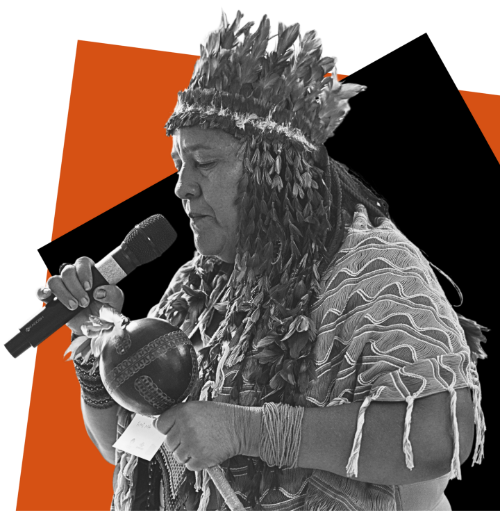

The Roots of
Leadership
A conversation between Beto Borges and Puyr Tembé
Bridging ancestral knowledge and 21st-century government policy isn’t easy, but it’s where the real change begins if we’re going to start living within planetary boundaries. Here’s a conversation (edited for length) between Beto Borges, Director of our Communities and Territorial Governance Initiative (CTGI), and Puyr Tembé, the Indigenous Peoples’ Secretary of the State of Pará in Brazil. Find the abridged transcript here.
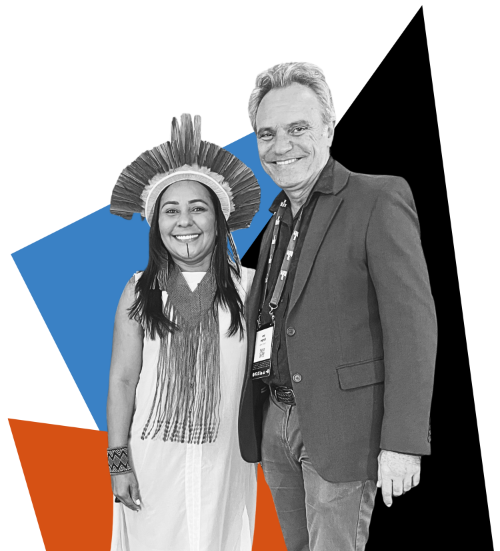
The future grows
from the ground up
Centering Indigenous and local leadership is the foundation of effective climate policy
At a time when climate action is often framed in terms of global summits, high-level pledges, and market mechanisms, it can be easy for policymakers and the public to forget the work of protecting forests and stabilizing the climate depends equally on the people who live within and alongside these ecosystems. Our team has long believed that solutions cannot be imposed from the top down; they must emerge from the ground up, rooted in the rights, knowledge, and leadership of the people who actually manage the land.
After all, research shows that only a fraction of global climate finance reaches these land protectors directly, despite their role as some of the most effective stewards of forests and biodiversity. These gaps leave communities carrying the burden of ecosystem protection while receiving minimal recognition or resources. Addressing these structural inequities is central to creating a climate finance system that is both fair and effective. Over the past year, this people-centric approach has guided a series of initiatives that illustrate how conservation can be more equitable, durable, and effective when communities are not only consulted, but placed at the center.
In Brazil, a landmark partnership with the Ministry of Indigenous Peoples and GreenData shows what this looks like in practice. The “Strengthening Indigenous Territories” project is helping Indigenous communities strengthen their own systems of self-governance, access climate finance, grow biodiversity-based economies, and build local leadership across all of Brazil’s biomes. The work is grounded in respect for Indigenous rights and community decision-making power, following the principle of free, prior, and informed consent. Rather than dictating solutions, the initiative invests in the ability of Indigenous partners to define and lead their own climate and conservation strategies.
Brazil also offers an important regulatory example. Resolution No. 19/2025, adopted by the country’s National REDD+ Commission, requires that carbon market projects respect Indigenous territorial plans, protect traditional land uses, and guarantee communities both independent legal support and a grievance mechanism. These provisions did not emerge in isolation. They are part of a broader movement—supported by Forest Trends trainings and partnerships—that elevates community priorities into the legal frameworks that will govern conservation finance for decades to come. As Brazil prepares to launch its own national carbon market in 2029, these protections for Indigenous rights and community benefits are set to be built into the foundation from the start.
Beyond Brazil, this year also marked progress on the global stage through the Equitable Earth Standard. Co-founded by Forest Trends alongside other partners, the coalition is creating a new carbon market standard and platform designed from the outset to meet the needs of Indigenous Peoples, local communities, and Global South countries. Its acquisition by the Ecosystem Restoration Standard, a global standard that certifies nature-based restoration projects for the Voluntary Carbon Market, adds further momentum, making it the first carbon standard co-developed with communities. The hope is to correct many of the power imbalances that have long existed within carbon markets.
Taken together, these examples point toward a new paradigm for conservation. Instead of viewing communities as stakeholders to be managed, they recognize them as co-creators of solutions—who deserve a share of the revenue. For other environmental organizations, the lesson is clear: durable progress will come not from top-down directives, but from investing in the people who have kept forests standing for generations, and ensuring they have the tools, rights, and voice to lead.


Looking back: two decades tracking the carbon market
What 20 years of carbon market data tells us about credibility, co-benefits, and the path ahead
When Forest Trends started tracking the voluntary carbon market (VCM) in the mid-2000s, the landscape had already been shaped by nearly two decades of experimentation. Our first State of the Voluntary Carbon Markets report was released in 2007, offering reliable data on trades, pricing, and how any of this actually worked. For twenty years, we’ve been trying to shine a light on how the voluntary carbon market has evolved—using transparency and analysis to help the market find its footing, navigate crises, and mature into a powerful tool for climate finance.
From the beginning, the VCM carried a tension at its core. On one hand, it was described as a dynamic new tool to funnel private finance toward sustainable development—as we put it, “most likely to reach poorer and smaller communities in developing countries” without “the bureaucracy and transaction costs of their regulated counterparts.” On the other hand, companies saw it as a sandbox to prepare for eventual carbon regulation, a place to test methodologies and demonstrate “high-enough standards” to stand behind their purchases. Is the VCM for delivering bulletproof carbon accounting or for channeling finance to sustainable development? Can it be both things? In the early years, that tension remained at a low simmer.
Then came the Great Financial Crisis, the 2009 failure of Waxman-Markey, and the 2010 closure of the Chicago Climate Exchange. The voluntary carbon market entered what we came to call the lean years—subsisting on dribs and drabs of corporate social responsibility purchasing.
What We Learned in the Wilderness
Through those difficult years, our work took on different importance. We weren’t just documenting transaction volumes; we were investigating what the market was actually delivering.
One critical finding from our 2016 survey of forest carbon projects showed that over half of project developers said their buyers engaged in forest carbon markets primarily because of the “beyond-carbon” impact of their dollars. At least 10.7 million tonnes of emission reductions found a buyer in large part because of co-benefits like biodiversity protection, community land tenure, jobs, and training. Buyers valued more than just tonnage.
Perhaps more importantly, by bridging our transaction data with corporate climate disclosures, we showed (in 2016, and again in 2023) that companies purchasing carbon credits were consistently more likely to be leaders across the board on climate metrics. That directly challenged the narrative that offsetting was evidence of greenwashing rather than a signal of genuine climate commitment.
These insights helped sustain the market’s legitimacy. When the Paris Agreement entered into force in 2016 and corporate net-zero commitments began lifting demand, there was groundwork to build on. The market experienced explosive growth: our 2021 data documented a peak of nearly two billion dollars in trading.
Then came a second round of bad press. High-profile investigative journalism questioned the integrity of forest carbon projects. The market evolved, as standards updated their methodologies and ratings agencies emerged. Market actors embarked on deeply technical and highly public discussions over issues like additionality, permanence, and the proper ratio of removals versus reductions credits. Ironically, these iterative improvements and mostly good-faith debates got interpreted by some critics as just more evidence of the VCM’s fundamental failures.
Through all of this, our data revealed something crucial: the market was bifurcating. Demand was splitting between buyers seeking permanence (technological solutions like direct air capture) and those seeking highly differentiated, relationship-driven, multiple-benefits projects (many nature-based solutions). Both groups are willing to pay premiums for “high quality,” but “quality” means fundamentally different things to them. That old tension—carbon accounting or sustainable development finance?—is showing up in new forms.
The Road Ahead
After two decades, we’re pretty clear-eyed about what the VCM is and isn’t. The bifurcated market we’ve been documenting isn’t a failure—it’s a maturation. But it requires new kinds of support. This landscape clarifies our priorities for the next phase:
Tracking policy and regulation’s evolving role. As Article 6 mechanisms come online and various jurisdictions experiment with compliance markets, we’ll track how these interact with voluntary action, where they create opportunities, and where they create friction.
Investing in capacity building and accessible data. We’re doubling down on our commitment to non-paywalled information and direct support for project developers. As market requirements grow more sophisticated, the gap between well-resourced and under-resourced actors widens. Ensuring that communities and smaller developers can navigate diligence, engage buyers on equal footing, understand technology options, and anticipate policy implications isn’t just about equity—it’s essential for the market to actually function. Our continued investment in accessible data has been deliberate: the actors who need our insights most are often the ones least able to pay for it.
A view beyond the VCM. The voluntary carbon market was never meant to be a silver bullet. Our work examines how it functions alongside other climate and nature finance instruments—natural capital investing, supply chain insetting, results-based payments, biodiversity credits, debt instruments, and so on. Understanding these tools in tandem, rather than in isolation, is critical for directing capital where it’s needed most. Our research showing that buyers valued co-benefits—biodiversity, land tenure, jobs—reinforces that carbon was never the whole story.
The market we track today looks nothing like the one we started documenting twenty years ago. It’s more sophisticated, more scrutinized, more stratified—and infinitely more useful. Our job remains what it’s always been: bringing transparency to complexity, using data to inform better decisions, and making sure that market evolution serves not just carbon accounting, but genuine climate action and sustainable development.



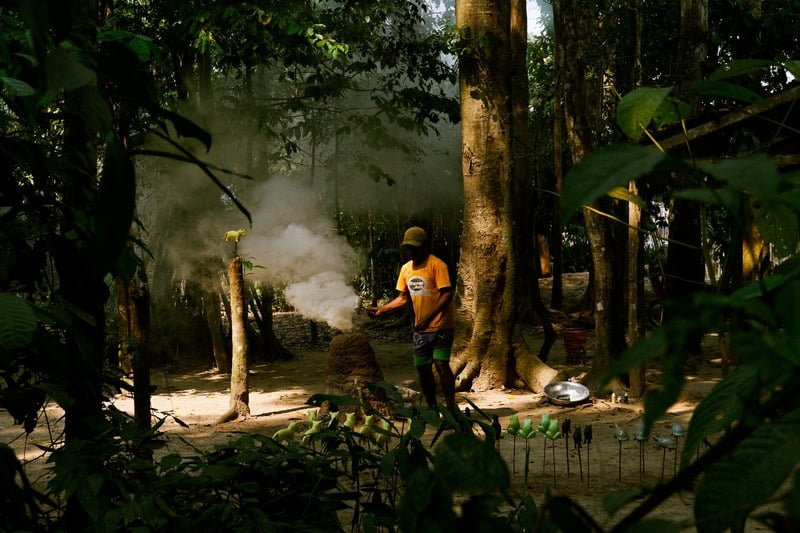
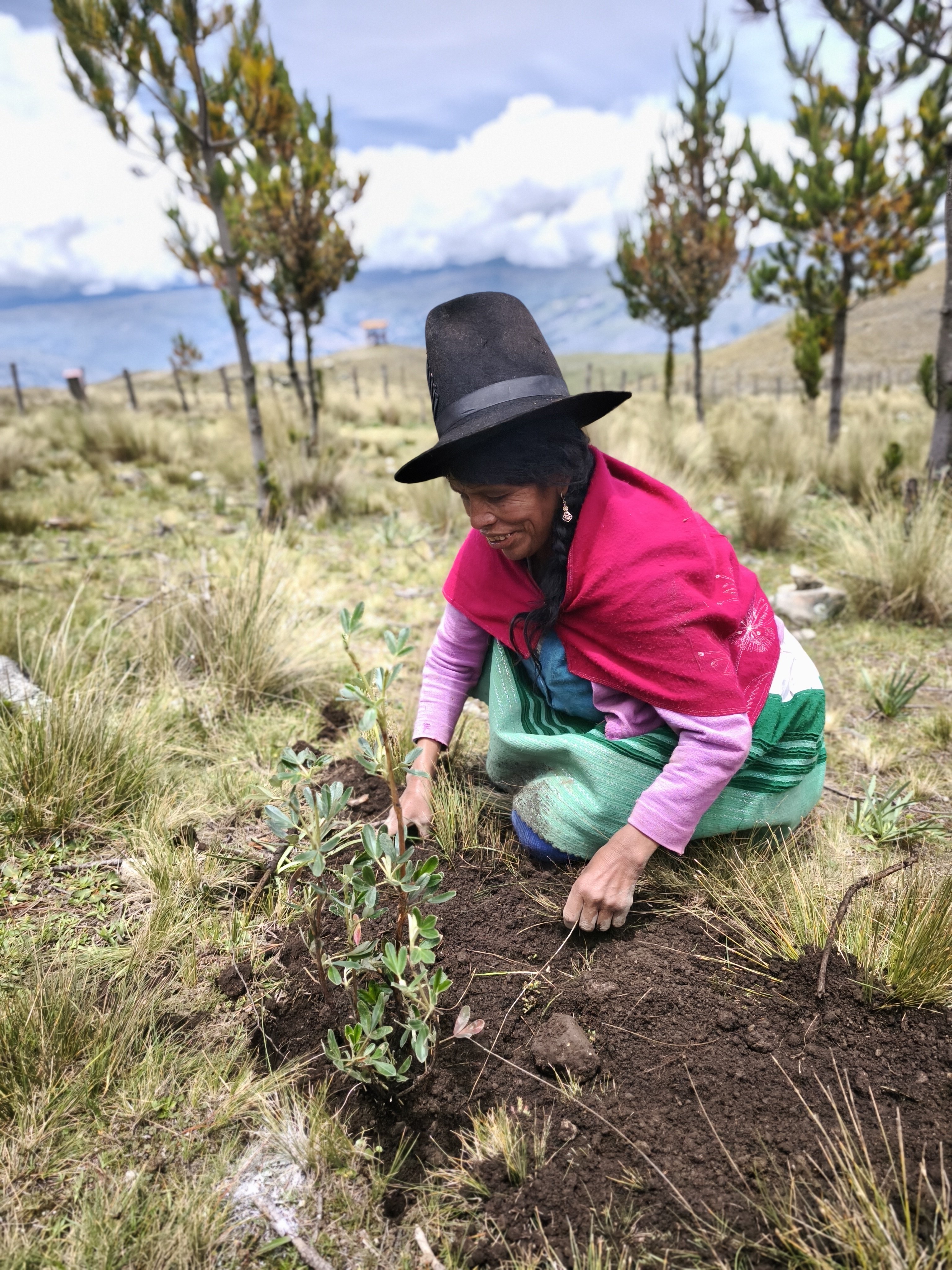
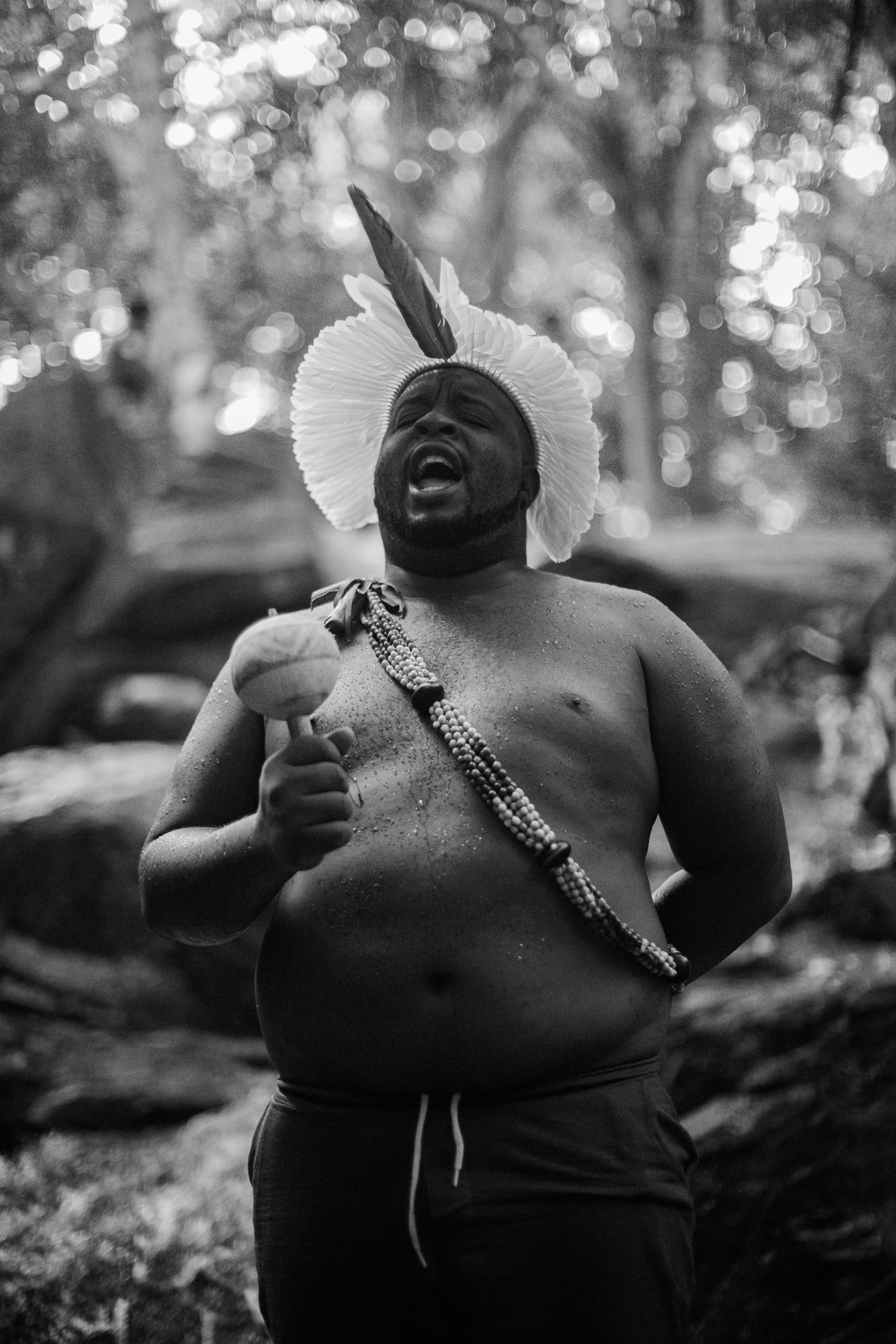


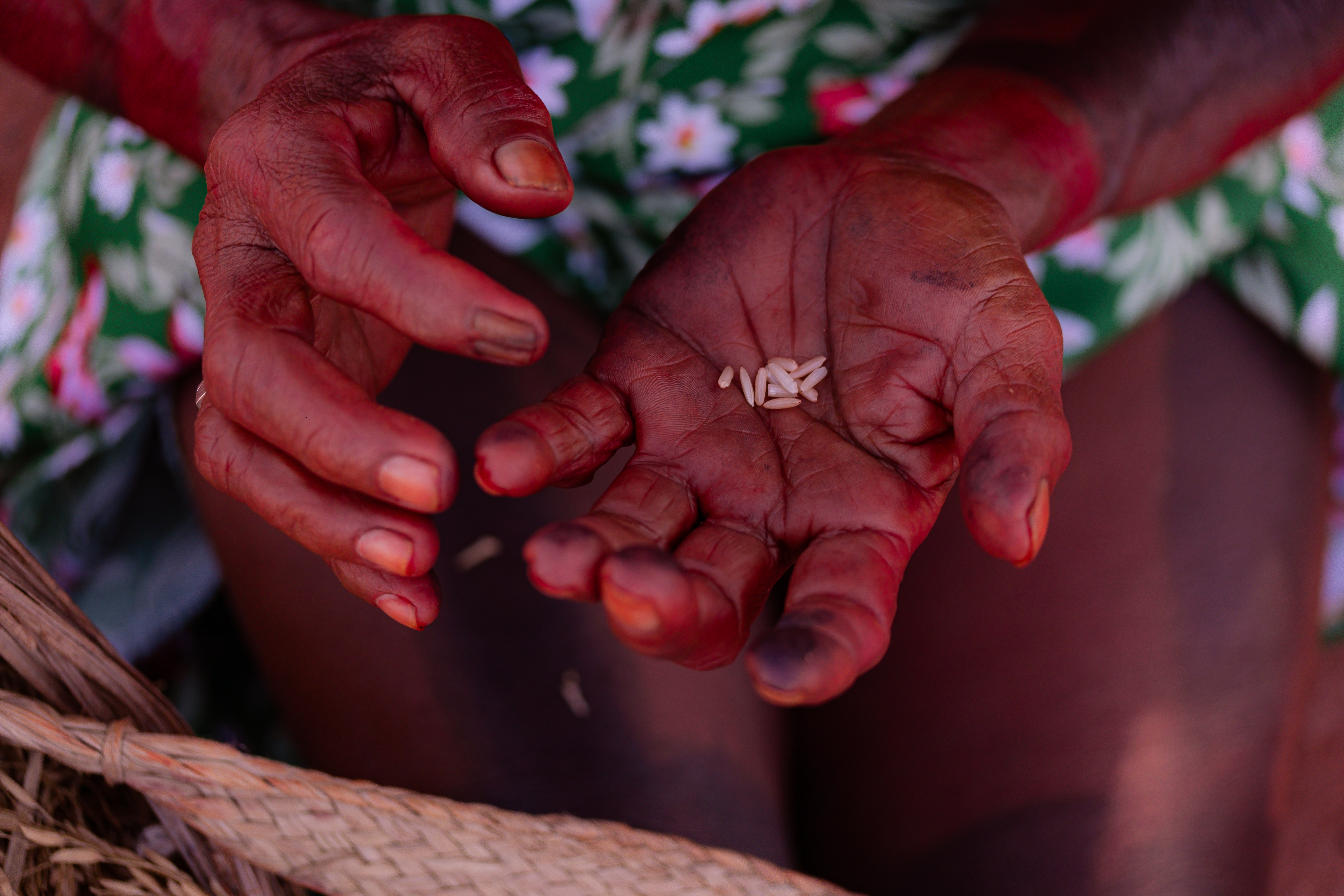
shared meals,
shared meaning
From forest to table, these dishes celebrate the connections that sustain our communities and our planet
Over the past 25 years, Forest Trends has brought together diverse ingredients—people, ideas, and partnerships—to create something greater than the sum of its parts. From pioneering ecosystem markets to supporting Indigenous-led conservation, our work has always been about blending innovation with tradition to sustain the world’s forests and communities.
In 2015, that spirit took shape in Cumari, a “Rainforest to Table” movement linking food, conservation, and community across the Amazon. Named for a native chili pepper, cumari means “the joy of flavor” in the Tupi language, which is a fitting expression of a creative and positive approach to conservation. Through Cumari, Forest Trends and partners connected chefs and restaurants with small-scale producers of unique rainforest ingredients, helping to inspire new markets that celebrate biodiversity and cultural heritage. Though the initiative has since concluded, it remains a vivid example of how collaboration and imagination can open new pathways for sustainable development.
In that same spirit, we share here a collection of recipes from our staff and partners—dishes that reflect the roots, relationships, and creativity that define Forest Trends. Each recipe is a small reminder that what nourishes us, personally and professionally, is often the same: connection, care, and the joy of sharing something meaningful.
Brazil
Pamonha (Sweet Corn Pudding Wrapped in Corn Husk)
I was born and raised in São Paulo city. Even though I’m a “big city girl,” I carry a lot of tradition from my mother’s family, who are from Bahia state. Pamonha is known all around Brazil, and it is eaten especially during the month of June during the many festivities that celebrate saints. My husband loves pamonha too, so on our first Valentine’s Day together, I took him to my grandmother’s house so she could make him pamonha. I have sweet memories of my grandma making us pamonhas and teaching us how to do it, though to this day no one can make it as good as she can. -Debora Batista, Finance and Project Manager of our Communities and Territorial Governance Initiative
Ingredients
- 6 ears of green corn (fresh, not dried)
- 1 cup coconut milk
- ½ cup sugar (adjust to taste)
- 1 pinch of salt
- Corn husks (from the same corn) for wrapping
Instructions
- Peel the corn, saving the husks. Cut the kernels off the cobs and blend them with coconut milk until smooth.
- Add sugar and salt. The batter should be thick but still pourable—similar to pancake batter.
- Soften the husks in boiling water for a few seconds. Fill each husk with about 3 tablespoons of the mixture, fold, and tie securely with strips of husk.
- Place the wrapped pamonhas in a large pot of boiling water. Cook for about 40–50 minutes.
- Drain, let cool slightly, and serve warm. Optional: Sprinkle a little cinnamon or serve with grated cheese if you like sweet-and-salty flavors.
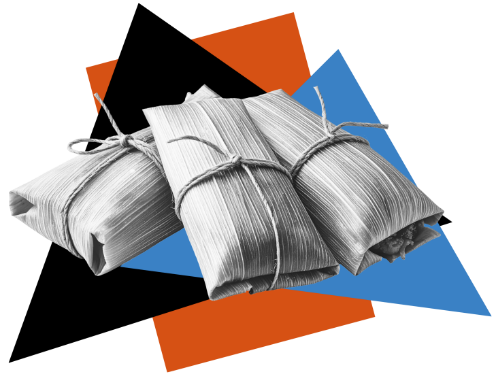
Myanmar
Laphet Yay Cho
(Burmese milk tea)
This creamy, sweat milk tea was a constant during my time in Myanmar, helping me stay awake and alert through various workshops with local officials and partners on natural resource management policy. It is a staple throughout Burmese tea shops, and I personally think it should be considered more of a dessert than a drink. Still, I always find myself craving one despite the danger to the waistline.
-Kerstin Canby, Senior Director of our Forest Policy, Trade, and Finance Initiative
Ingredients
- 2 tablespoon strong black tea leaves (e.g. Assam)
- 200 ml water
- 2 teaspoon sweetened condensed milk
- ½ cup evaporated milk
- 1 pinch of pinch salt (optional)
Instructions
- Bring water to boil, add tea leaves, and simmer for 5-10 minutes to create strong full-bodied tea
- Strain the brewed tea into a mug, removing all tea leaves.
- Stir in both the condensed milk and the evaporated milk until the mixture is smooth and silky.
- For a frothy layer, pour tea back and forth between 2 mugs several times (similar to the Malaysian teh tarik method).

Peru
Hiriuchu
Chiriuchu is a dish that uses ingredients from all three regions of Peru: the coast, the highlands, and the jungle. It’s been passed down through generations and continues to be enjoyed by both children and adults alike, especially on Cusco Day. One of its main ingredients is cuy, or guinea pig. Guinea pigs are considered an environmentally friendly livestock, due to the small land size needed to raise them. I personally love chiriuchu, and the trick is to eat a little bit of each ingredient and then put it all in your mouth at the same time, so the flavors blend together. -Flor Torres Berrio, Monitoring & Evaluation Specialist for the NIWS Project
Ingredients
- 1 whole fried or baked cuy (guinea pig)
- 6 slices of cooked chicken
- 6 slices of fried chorizo or
- longaniza sausage
- 6 slices of fresh cheese
- 6 slices of corn fritters (like corn tortillas)
- 1 handful of charqui (dried beef or
- llama meat)
- 1 cup of fried trout roe or dried fish roe (optional but typical)
Instructions
Prepare the meats:
- Fry or grill the guinea pig until golden brown and crispy.
- Cook the chicken in salted water with herbs (mint, oregano) until tender.
- Fry the chorizo sausage in a pan.
- Toast or fry the charqui (dried meat).
Prepare the side dishes:
- Cook the hominy and corn until tender.
- Wash and boil the cochayuyo (seaweed) for a few minutes, then chop it.
- Prepare the corn fritter and fry it until golden brown.
Assembling the dish:
- Place a lettuce leaf as a base.
- On top, arrange small portions of each ingredient: guinea pig, chicken, dried meat, cheese, sausage, French toast, seaweed, hominy, toasted corn kernels, corn on the cob, egg, and strips of chili pepper or rocoto pepper.
- Everything is served cold or at room temperature, never hot.
- Enjoy with your hands!

Vietnam
Brown Sugar Boba Coffee
One of our favorite recipes is Vietnamese brown sugar boba coffee, a drink that beautifully combines local flavors with global trends. The drink uses locally grown coffee beans and homemade tapioca pearls cooked with brown sugar, both sourced from environmentally conscious producers. This recipe also reminds us how interconnected food and sustainability are. The increased demand for forest-risk commodities used in food consumption—such as cassava, coffee, cocoa, and sugarcane—has been one of the main drivers of deforestation worldwide. By choosing responsibly sourced ingredients, we can continue to enjoy delicious drinks like this, while still protecting the forests that make them possible. -Kim Anh Luong, Associate Researcher for our Vietnam-based Forest Policy, Trade, and Finance Initiative
Ingredients
- 42 grams brown sugar
- 100 grams tapioca starch
- 20 grams instant coffee powder
- 2 grams cocoa powder
- 70 grams water (for the tapioca boba)
- 100 ml full-cream fresh milk (warmed)
Instructions
- Make the brown sugar tapioca pearls:
- Pour 70 ml water into a pot and add the 42 grams brown sugar. Heat until the sugar dissolves and the water comes to a boil.
- Immediately add the 100 grams of tapioca starch. Turn off the heat and stir until the mixture forms a unified dough.
- Divide the dough into small pearl-shaped pieces (“boba”). Roll each through a little dry starch to prevent sticking. Boil a pot of water, then add the tapioca pearls and cook for about 15 minutes, stirring to prevent sticking. Once the pearls turn translucent, transfer them into a bowl of cold water to stop the cooking and prevent sticking.
- Prepare the coffee base:
- Place the 20 grams of instant coffee powder into a glass. Add some hot water (enough to dissolve) and stir with the warmed full-cream milk.
- Assemble the drink:
- Add the cooked brown sugar tapioca pearls into the prepared coffee-milk mixture.
- Sprinkle 2 grams of cocoa powder on top.

Our Partners
Board of Directors
Bettina von Hagen
CO-CHAIR
EFM Investments & Advisory
USA
Harris Sherman
CO-CHAIR
Former US Dept. of Agriculture
USA
Joseph Azrack
Azrack & Company
USA
Linda Coady
Prev. British Columbia Council of Forest Industries
Canada
Sally Collins
Prev. US Forest Service
USA
Whitney Debevoise II
Arnold & Porter
USA
Robert Fanch
Devil’s Thumb Ranch
USA
Lyndon Haviland
Lyndon Haviland & Co
USA
Michael Jenkins
Founding President & CEO, Forest Trends
USA
Miguel Serediuk Milano
Instituto LIFE
Brazil
Yuejia Peng
hub101.earth
Pre.Prev. S&P GlobalFrm. UK, China, and Zimbabwe
Manuel Pulgar-Vidal
WWF
Frm. Minister of Environment, Peru
James Schultz
GreenCollar
Australia
Carole Segal
Segal Family Foundation
USA
Sergey Tsyplenkov
Environmental Expert
Russia
Stewards of our vision
and impact, guiding
our mission forward
Fellows
Tundi Agardy
Sound Seas
USA
Juan Carlos Gonzalez Aybar
Fronterra
France, Peru
Ricardo Bayon
Encourage Capital
USA
Clark Binkley
International Forestry Investment Advisors
USA
Victor Bullen
Prev. USAID
USA
Mark Campanale
Carbon Tracker Initiative
UK
Michael Cantor
Equator Capital Group
USA
Pedro Moura Costa
BVRio Environmental Exchange
Sustainable Investment Management
UK
Jack Kimani
Climate Action Platform for Africa
Kenya
Eugene Linden
Author
USA
Bruno Mariani
Symbiosis Investimentos e Part. S. A.
Brazil
Carlos Munoz Pina
World Resources Institute
Mexico
Isabelle Reinecke
Youth Against Plastic Pollution
USA
Alice Ruhweza
Alliance for a Green Revolution in Africa (AGRA)
Kenya
James Salzman
UCLA School of Law and USCB Bren School of Environmental Science & Management
USA
Naveen Sikka
Terviva
USA

Bill Eacho
Partnership for Responsible Growth
USA
Alex Echols
The Campbell Foundation
USA
Brad Gentry
Yale University
USA
Alastair Handley
Mentor for a Better Future
Canada
Jaime Harrison
Environmental Consultant
USA
Alex Johnson
Virridy
USA
Jordan Kassalow
VisionSpring
USA
George Kelly
Earth Recovery Partners
USA
David Tepper
The Earth Partners
USA
Sudip Thakor
Pumori Capital
USA
Holt Thrasher
Synovia Capital
USA
Wouter Veening
Institute for Environmental Security
The Netherlands
Jeff Wright
Terraformation
USA
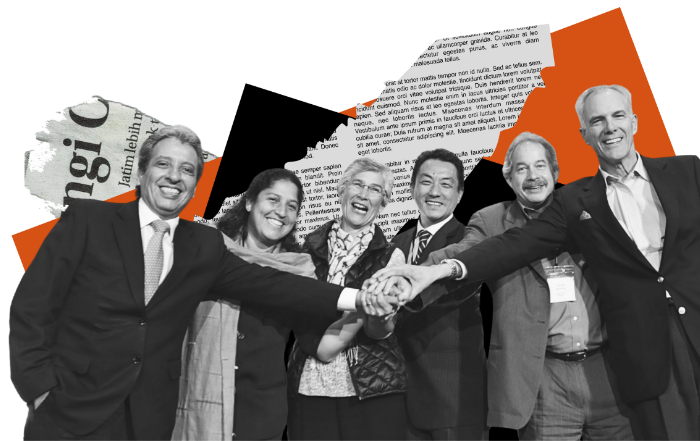
Supporters
Evergreen Society (annual gift of $1,000 or more)
Harold Appleton
David Ayer
Joseph Azrack
Garo Batmanian
John Begley
Genevieve Bennett
Clark Binkley
Eszter Bodnar
Oly Bracho
David Brand
Catherine Brown
Ken Brown
and Elizabeth Sanjuan
Victor Bullen
Nora ‘Tooey’ Cameron
Michael Cantor
and Jenny Springer
Jan Cassin
Thalia Chryssikou
Andrew Crichton
Linda Coady
Sally Collins
Adam M. Crook
Aneesh Daga
Whitney Debevoise II
Michael P. Dowling
Jimmy Eggers
Analia and John Earhart Fund, a fund of the Tides Foundation
Alex Echols
Robert and Suzanne Fanch
Jasmine Garcia
Alastair Handley
Milan Hasecic
Carl Hausmann
Lyndon Haviland
David Hunter
Michael Jenkins
Angelee Johns
Julie Katzman
Anthony Kim
Charlie and Jennie Kurtz
Colin LeDuc
Paul E. Lingenfelter
Justin Lonheim
Mary Lyons
Earl Bennett
Scott and Carla MacLeod
Lee and Susan McIntire
Hans Mehn
Xavier C. Menguy
Michael Milczarek
Miller Family Fund
R. Michael Miller
Sam A. Morgan
Wade Mosby
Eric Murciano
Dimitrios Nikolakopoulos
Greg and Lyndsey Nuchols
Donald Paulson
Yuejia Peng
and Luca Lombardi
Gerald Prolman
Lynette Raap
Radovan Radman
James H. Reynolds
Francois J. Rigou
James Salzman
Gordon and Carole Segal
Harris D. Sherman
and Tina Staley
Jessa Sherman
Wayne Silby
John Storey
Theron and Alston Taggart
David Tepper
Sudip Thakor
Blasé Theodore
Holt Thrasher
John Uhar
Bettina von Hagen
David Wade
Sally West
Tom and Ann West
Jeff Wright
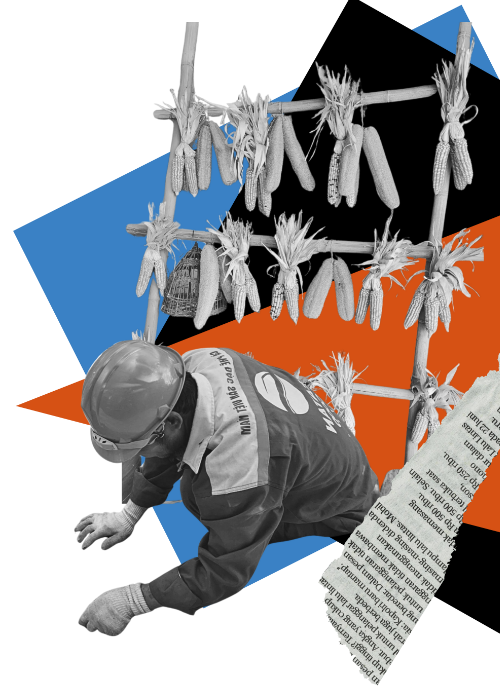
Supporters
Individuals
Robert Arner
Irantzu Lexartza Artza
Jean-Charles Bancal des Issarts
Lilit Bodakowski
Alden Booth
Theresa Borstelmann
Sarah Bradley
Julien Brown
Richard Burrett
Alan Carniol
Terry Chen
John F. Cooke
Juliet Davis
Kathleen Doyle
Yimena Eyzaguirre
Joan Fabry
Christie Ferrier
Grant Ferrier
Tracy Ferrier
Jacob Fillion
West Garrett
David Gordon
Colton and Adrien Hand
Jeffrey Hatcher
Karen Haugen-Kozyra
Daniel Hellerstein
Ard Hordijk
Philip and Holiday Houck
Tim and Judy Jenkins
Olof Johansson
Steve Julius
Jennifer Kenning
Bo Kim
Steven King
Chris McIsaac and Tracey Braun
Charles McNeill
Joshua Mintz
Jennifer Mitchell
Michelle Mogenros
Fernando Momiy
David and Mollie Neal
Geraldine Nicholson
Manuel Pulgar-Vidal
Eric Raymond
Nicole Regep
William Rosen
Francis Strodel
Raj Tari
Barbara Boyle Torrey
Sergey Tsyplenkov
Yihana Von Ritter
Rick Weyerhaeuser
Lisa Wu
Institutions
Astera Fund
The Rona & Jeffrey Abramson Foundation
Benevity; UK and American Online Giving
Bright Funds Foundation
The Campbell Foundation
D N Batten Foundation
EcoTrust
Galena-Yorktown Foundation
Generation Foundation
Give Lively Foundation
Good Today
High Tide Foundation
The John D. and Catherine T. MacArthur Foundation
The McCance Foundation
Network for Good
Schwartz Family Foundation
Skoll Foundation
Silicon Valley Community Foundation
Tierra Resources, LLC
ZG Foundation
A heartfelt thank you to our donors, Board of Directors, and Fellows, whose generosity and commitment make our work possible. We’re honored to have you in the Forest Trends community, and your trust inspires us every day. Together, we are making a lasting difference.


